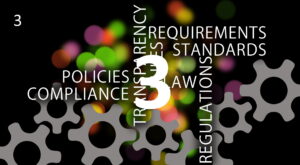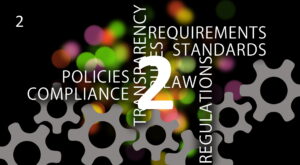
Stop blaming top management
Over the last years I recognize more and more a blaming game against top management. My urgent appeal to the agile community is: STOP THIS.
Why this statement?
Since over thirty years I am in business. In the last twenty years I spend a sound part of my time working with middle management and in the past ten years with top management. I really have to say, the vast majority of top managers I met are smart, charismatic, engaged and know very well the dark spots around them. Well, terrible hard-core managers are reality, but hey, terrible employees as well. Luckily neither is the majority.

This image is from Health.mil – the official website of the US Military Health System :-). That is fun – isn’t it?
AND YES: I don’t like statements such as “A good manager hires people who are smarter than he is”. A nice Dilbert (see https://dilbert.com/strip/2000-08-20) tells you where this leads to. A manager or leader requires DIFFERENT and COMPLEMENTING competences. The competences of a leader and manager. She is part of the team(s) complementing with management and leadership competence.
- Probably we as the agile community are part of this view on top management?!
- Probably we do not value the competences of the managers and leaders in our companies?!
- Why are managers where they are?
- Are we, the middle management members and employees, dump sheeps with no influence; and because of that not part of this status quo?
Here some of my observations
- We always talk about failure culture. But, as soon as a manager shows a tiny weakness or made a wrong decision, the blaming starts “what a failure…”, “If he has asked me before…” and so on. Where is our feedback culture, openness and transparency?
- Manager do have the same restrictions than any other employee in the company. It is nonsense to think a CEO just can decide and pull the big lever just as she likes. A CEO is part of the system as we are. There is the supervisory board, the competition, the group CEO, still strange goal definitions (as part of our culture) and so on.
- I recognized: top managers are alone and isolated. They miss colleagues for true and open feedback. We all unload our claims and demands on his desk and expect immediate action. Where is our part of communication and collaboration?
- Our performance oriented occidental culture interprets stagnation as break down. As soon as you reached a certain level of responsibility, our culture forces every single one of us to become better, faster, more responsible. Otherwise your influence drops, you are marked as a “yesterday model”, the competences you own and have a long experience in, are not respected anymore. You will be handed downward. Managers are forced to go forward as soon as they crossed this social border. I know managers who told me “you know, actually I was happy with my job as X. We had success, my teams and I leading and supporting them. We created this product and it was fun. But then the supervisory board asked me to take the responsibility for this large program Y. From my heart, I would rather stay with X, but that would be the end of my life here. They would let me fall. I still must work fifteen years. I like the company. Finally, I agreed to go for Y and I do my best. I got pretty strict constraints – you know this game, don’t you? I was better-off before…”. And yes, I know.
It is so easy to blame managers. It is so easy to call for leaders instead of managers. It is harder to step back, reflect and try to find a way out of this trap.
I will not offer a solution in this blog. I do not know if a “solution” to solve THIS exists at all. The world is complex, and our culture builds up high walls we have to tear down for a change.
What I do?
I stopped pointing at the top management. In my work with top management I try to find the very rare moments to start an open and safe conversation for both sides. And within the teams I ask for understanding. I try to foster conversation between top management and “all the others”. Conversation is always a good mean to create mutual understanding. I want barriers to disappear. Top managers and leaders are smart, charismatic, engaged and it is of high value to work closely together.
Maybe it helps to offer top managers (or top leaders?) support and help instead of only expecting support and help.
Maybe some time in the future a responsible leader of X is allowed to stick with X instead of going for the larger and more demanding Y – keeping her influence and responsibility and recognition.
 Next Post
Next Post

